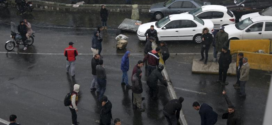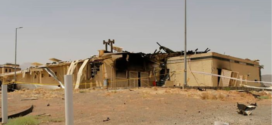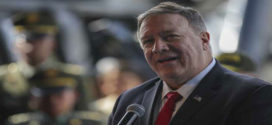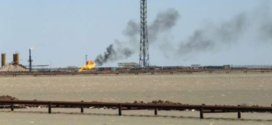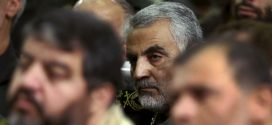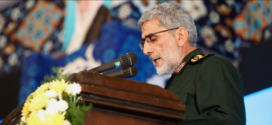
When the mummified body of Reza Shah popped up by accident it carried a message but not one that a lot of people in Tehran, or the U.S. and Britain, will want to hear.
By: CLIVE IRVING 05.04.18
It was a highly inconvenient time for the corpse to appear.
Inconvenient in Iran because the name reminded people of another time, long ago, when there was a promise of greater personal freedom that, in the end, was never delivered.
Inconvenient in London and Washington because the name recalled how Britain and the United States had quashed that freedom when it threatened to stop them from treating Iran like a vassal state as they pillaged its wealth.
The corpse was unearthed by accident two weeks ago at a construction site south of Tehran and is widely believed to be that of Reza Shah, founder of the Pahlavi dynasty that ended with the cleric-led Islamic revolution of 1979. Its original resting place was a dynastic mausoleum, destroyed during the mayhem of the revolution.
Details of the discovery are confused. One report has it that the body was secretly reburied, another that it was taken by the driver of an excavator.
But then little in the history of both Reza Shah and the Pahlavis is ever simple. To begin with, the dynasty was founded on claims to an illustrious Persian past that were entirely fictional. However, the fact that when Reza died his body was sent to Egypt to be mummified like a Pharaoh gives some idea of how his after-life was expected to be well beyond the reach of an excavator.
At root this is a tragic story not just of a usurper ruler but also of the nation that he tried to drag from centuries of misrule and decay into the modern world.
Amid the bout of regime changes and western-dictated re-drawing of the Middle East maps that followed World War I, Persia was left as a relatively undisturbed backwater. In 1920 the population was 12 million and still predominantly rural.
Only 10 percent of the land could support crops and the large nomadic population existed at levels of bare subsistence, with tribes governed autonomously by their chiefs. The towns and cities remained largely as they had been in the middle ages. Education and the law were in the hands of clerics.
Persia was, in effect, a medieval hangover in a region that elsewhere was ablaze with revolution and a new nationalism, as in neighboring Turkey where Kemal Ataturk was ruthlessly building a new secular state in the wake of the collapse of the Ottoman Empire.
In Persia power in the cities was still shared between the clerics and the merchant class who ran the bazaars, which were the engine of local economies. Above them was an old land-owning aristocracy, dominated by the so-called Thousand Families whose bloodlines mingled with royal dynasties, the tribal nobility and a religious and military elite.
Of these forces the military was the most coherent and one unit, the Cossack Brigade, created and trained by White Russian officers before the Bolshevik Revolution, was the most modern in experience and outlook. Its outstanding officer was a newly-appointed general, Reza Khan, over six-foot tall with piercing, unsmiling eyes.
In February 1921, a small cabal, led by a journalist named Sayyed Ziya, organized a coup to take control of the country, pledging to restore Persia’s sovereignty and bring her into the twentieth century. Reza Khan was put in charge of the armed forces. Within a year he had emerged as the strong man, single-minded and autocratic. One of his earliest acts was order the re-writing of history to eliminate the role of Ziya in the coup and establish the legend that it was he, above all others, who was the de facto ruler.
One of Reza Khan’s problems was what to do about the Persian monarchy. A dynasty named the Qajars still occupied the throne but were little more than anachronistic figureheads. Far more of a problem were the ayatollahs of the Shi’a Muslim leadership, and when Ataturk abolished the Sunni Muslim Caliphate of Turkey in 1924 Reza Khan was warned that the ayatollahs would not tolerate any move against their power.
Reza Khan had until then favored establishing a secular republic, and he had shown no personal signs of piety. But he shrewdly saw his one opening to absolute power:
“I have always wanted to see the progress and promulgation of Islam,” he announced, and at the same time realized that if he could seize the monarchy he could use it as a counterbalance to clerical power. In 1925 the Qajar dynasty was dissolved and Reza Khan installed himself as the first Shah of the Pahlavi dynasty.
Royal hagiographers were immediately instructed to manufacture a lineage that provided a spurious connection to the distant greatness of the ancient Persian kings who created the first world empire. In day-to-day affairs such fictions didn’t really matter, since he soon had absolute unchallenged power. Those around him suspected of less than absolute loyalty began to die or disappear in mysterious circumstances.
He was similarly ruthless about modernizing Persia. He declared that this mission required a change in the national character: “The Persian character has got to be hardened. For too long my countrymen have relied on others. I want to teach them their own value, so that they may be independent in mind and action.”
It may have been this suspicion of softness that caused the Shah in 1935 to change the name of his nation from Persia, as it had been known historically for centuries and stood in western literature for both ancient glory and mellifluous cultural attainments, particularly in poetry, to the much harder-sounding Iran, which had its roots in specific geography.
In any event, he soon cracked down on the tribal leaders and announced: “It is not becoming that you, the sons of an ancient country with its illustrious historical civilization, should wander over desert and mountain like predatory animals. You must give up the nomadic and tent-dwelling life.”
This iron-handed style of rule often resulted in farce. Robert Byron, a student of Islamic architecture who wrote The Road to Oxiana, one of the best accounts of traveling through Persia, told the story of a visit made to a distant province by the Shah when he was demanding new towns with modern street planning. Byron noted: “The terrified local authorities built a whole new town, Potemkin-wise, whose walls, though festooned with electricity, enclosed nothing but fields.”
As the Shah pushed for social change, the ayatollahs feared for their own power and were enraged by an order for women to stop wearing the veil. In 1935 they staged a mass protest against the Shah’s reforms at one of the most sacred shrines of Shi’a Islam in the northeastern city of Mashed. Reza Shah ordered the local governor to put down the protest “even if the shrine is leveled.” The army moved in and sprayed the place with machine gun fire. Five hundred people died and many more were injured. The religious leaders were banished.
This atrocity was an astonishing assertion of the Shah’s power and, equally astonishing, there was virtually no public outcry or further resistance.
The Shah showed similar resolve in driving through a major project that to him most announced to the world that Iran was acquiring the basics of a modern power, the Trans-Iranian railroad that, when it was finished in 1938, linked the Persian Gulf to the Caspian Sea. The country suffered sustained economic austerity because he insisted that the railroad was built without foreign money.
This was, however, a more symbolic than actual display of independence. In truth, the country’s economy had for decades essentially been pillaged by one particular force, the Anglo-Iranian Oil Company.
Early in the century the British navy embarked on a plan to convert all its ships from coal to oil-fired boilers. No oil had yet been found in the Middle East, but surveys by British prospectors pointed to the probability of a rich field in southern Persia, conveniently in reach of ports on the Gulf. On May 16, 1908, a trial well near a small mosque at Masjid-i-Sulemain hit oil at a depth of 1,180 feet. It was a prolific field, and the future of Persia would be cursed by it.
Reza Shah personally took charge of negotiating a new deal for oil royalties with the British in 1933. The Great Depression had caused a huge slump in demand and prices. The British used this exigency to threaten to pull out their technicians, implying that the fields could not be operated without them, unless they got a new contract for 32 years at 1933 prices. The Shah panicked and conceded. (As late as 1950 the British company was paying annual royalties of $45 million to Iran and taxes of $142 million to its own government.)
But, ironically, the Shah was to be destroyed finally by his idee fixe, the Trans-Iranian Railroad. In June 1941, when Hitler invaded Russia, the railroad suddenly acquired huge strategic importance to Britain and Russia, then allies, by providing a lifeline for essential supplies from the Gulf to Russia. Reza Shah attempted to assert Iran’s neutrality in the war and refused to collaborate. He was smeared by the British as a self-seeking tyrant with Nazi sympathies and forced to abdicate.
He died in exile in South Africa in 1944.
But the Pahlavi dynasty was kept alive, as a pawn of the west, by Reza Shah’s son, Mohammed Reza Shah, who succeeded him in 1941.
He was a young and pliant figurehead, the perfect puppet for western interests.
But his time seemed over when he was deposed in a 1951 coup that was followed by a democratically elected government led by Mohammed Mosaddegh.
Mosaddegh said it was time for Iran to wholly own its own wealth, particularly its oil. As a result, he was overthrown in a counter-coup in 1953 engineered by U.S. and British agents, on the basis that Mossadegh was too vulnerable to communist influence. This was nonsense. Even Dean Acheson, the epitome of American diplomatic orthodoxy, said Mossadegh, far from being a left wing revolutionary, was “a most conservative, rich, reactionary, feudal-minded Persian.”
Mohammed Reza Shah was re-installed on the grand “Peacock Throne,” having learned a thing or two about who the masters of Iran really were. He continued his father’s commitment to modernizing Iran while realizing, astutely, that to remain secure he needed to keep the British and American interests happy. In the end, though, his idea of modernization was too much equated with westernization and the power that his father had humbled in the 1930s, the Shi’a clerics, returned with a vengeance. Come the revolution in 1979 he went into exile.
When Reza Shah’s corpse reappeared in Tehran like Banquo’s ghost in Macbeth it spooked some but encouraged others, complaining about rampant corruption and economic hardship, to chant “Reza Shah, bless your soul.”
According to the New York Times, plain clothes police officers were sent to the site of the Pahalavi mausoleum and have been dispersing “Reza Shah aficionados” and the construction site where the mummy was found has been cordoned off.
Abbas Milani, the director of Iranian studies at Stanford, told The Guardian that the shah’s reappearance would be a “nightmare” for the Iranian regime because “it is testament to the fact that history is not written by authoritarians equipped with force, hypocrisy, shovels and bulldozers.”
Bearing in mind that Reza Shah was himself a ruthless authoritarian (of the kind much admired by Donald Trump) that sounds far too much like wishful revisionism. But that view is probably shared by a hard core of Pahlavi fans, many of them now exiles living in California, who still hope that one day Reza Shah’s grandson, the self-styled crown prince Reza Pahlavi, who lives in the Washington suburbs, might return to Iran and to a restored Peacock Throne.
That is about as likely as the restoration of the Romanovs.
 khalijefars News, Blogs, Art and Community
khalijefars News, Blogs, Art and Community
